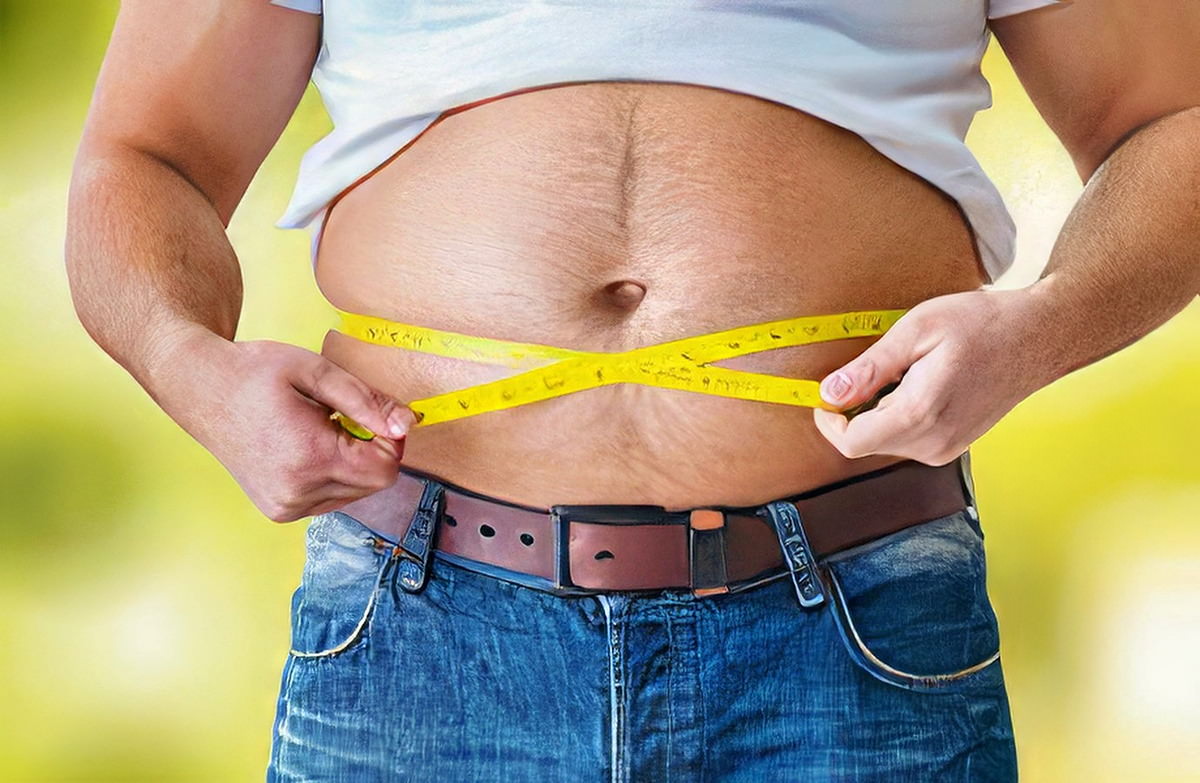We’ve been warned countless times about the dangers of excess belly fat. 😨 But a groundbreaking study from Italy has revealed a shocking new mechanism that directly links obesity, insulin resistance, high blood pressure, and severe COVID-19 complications. 🔬 It’s a wake-up call we can’t afford to ignore any longer. 🚨
The study, conducted by researchers led by Sinti et al., uncovered clear evidence of fat embolism in lung specimens from COVID-19 patients who were overweight or obese. 🔍 This finding suggests that fat embolism might be a crucial pathologic event with severe consequences for managing severe COVID-19 cases.
💥 Fat Embolism Syndrome: The Hidden Danger 💥
Researchers discovered that debris from overfilled fat cells can circulate throughout the body, causing liver and respiratory distress that manifests as severe COVID-19 complications. 🫁 This condition, known as fat embolism syndrome (FES), is a multi-organ failure that can be potentially lethal. 💀
FES mirrors the symptoms of severe COVID-19, including reduced blood oxygen saturation, respiratory distress, systemic inflammation, confusion, and mental challenges. 😷 And it’s not just limited to COVID-19 – FES is commonly seen in trauma patients with pelvic and long bone fractures, where bone marrow and fat are released into the bloodstream. 💥
The study found lipid-like structures in the lumen of mesenteric venous vessels (vessels around the gut) in some COVID-19 patients, further supporting the link between visceral fat and respiratory distress. 🩸
🕵️♂️ The Smoking Gun: Overfilled Fat Cells 🕵️♂️
The study’s thesis is simple yet alarming: insulin resistance creates overfilled fat cells. 🍔 These cells get infiltrated by macrophages (part of the immune system), causing necrosis (cell death) and lipid spillover – a.k.a. inflammatory debris. 🔥
This debris first travels to the liver, causing collateral damage such as focal macrovascular steatosis (lipid buildup in blood vessels). 🍺 Then, it reaches the lungs, narrowing blood vessels, reducing oxygen delivery, and increasing the risk of clotting and thrombosis. 🩸 It’s a vicious cycle that can lead to severe disease and complications. 😷
Even though there were no significant differences in body mass index (BMI) or fat cell size between COVID-19 patients and controls, the study found a higher prevalence of CD68 macrophages (immune cells) in the visceral fat tissue of COVID-19 patients. 🧫 This suggests that the visceral fat inflammation plays a crucial role in the progression of severe COVID-19 cases.
🚨 The Visceral Threat: Belly Fat’s Deadly Secret 🚨
The real culprit here is visceral fat – the deep, intra-abdominal fat that surrounds our organs. 🍩 Even if you’re not visibly overweight or obese, you could still have high levels of visceral fat, putting you at risk.
Alarmingly, the study found signs of fat embolism in 93% of obese individuals compared to 63% of non-obese individuals, regardless of COVID-19 diagnosis. 📈 Visceral fat is the true enemy, and it’s not just a threat to adults – children are also vulnerable. 👶
In fact, one of the first studies cited in the book “Belly Fat Effect” showed that even six-year-olds can have increased concentrations of inflammatory markers in their fat tissue. 😨 This could explain why more children were hospitalized during the Delta variant wave, as they may have had high levels of visceral fat at a young age.
Moreover, the study couldn’t definitively determine whether SARS-CoV-2 directly infects fat cells or if the inflammation and cellular stress in visceral fat tissue were secondary to the systemic inflammation caused by COVID-19. 🤔 This highlights the need for further research in this area.
💪 The Solution: A Healthy Lifestyle Revolution 💪
The key to defeating this hidden danger lies in improving our metabolic health. 🌱 It’s not just about pills or vaccines – it’s about embracing a holistic lifestyle change. 🧘♀️
We need to focus on:
- 💤 Quality sleep and stress management through techniques like mindfulness and meditation
- ⏰ Maintaining circadian rhythms by getting exposure to natural light in the morning and minimizing blue light exposure at night
- 🏃♀️ Regular exercise, including both high-intensity interval training (HIIT) and resistance training, aiming for at least 150 minutes per week
- 🧘♂️ Breathwork and meditation practices to reduce stress and inflammation
- 🥗 A balanced diet rich in whole, unprocessed foods, with reduced intake of refined carbohydrates and added sugars
- 🌳 Reducing exposure to persistent organic pollutants, endocrine-disrupting chemicals, and other environmental toxins that can disrupt metabolic health
By prioritizing our health through these lifestyle changes, we can decrease visceral fat accumulation, reduce the risk of fat embolism syndrome, and improve our overall well-being and resilience against severe viral infections like COVID-19. 🌟
It’s time to make healthy living the main priority, not just for ourselves but also for future generations. 👪 We must address the root causes of metabolic dysfunction and obesity to prevent the devastating consequences that this new research has brought to light.
Copyright © 2025 Hea1th.net

